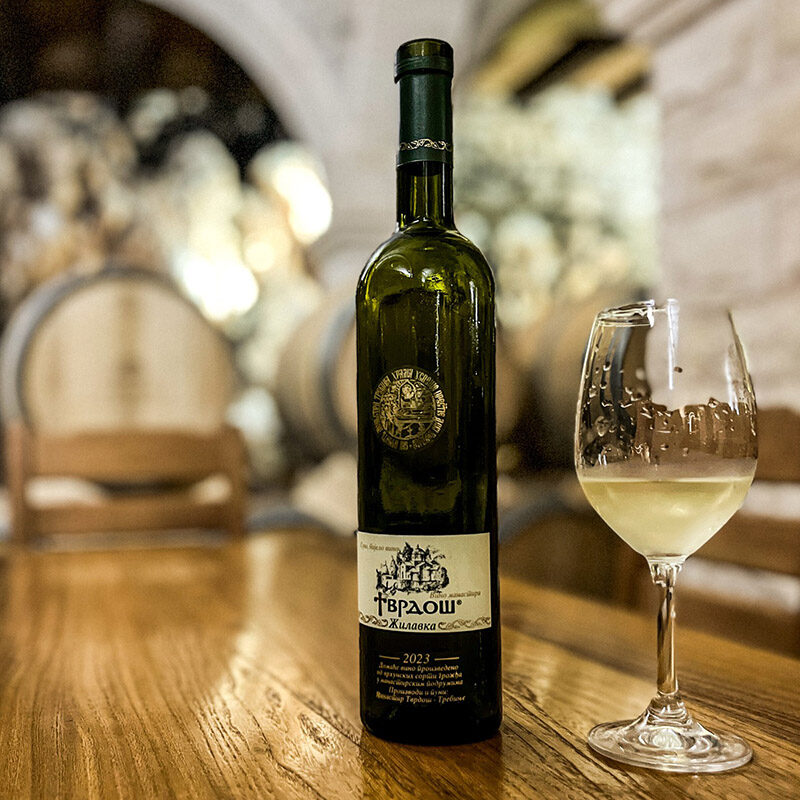Welcome to Trebinje 👉 No.1 Hidden Gem In Bosnia and Herzegovina
This southernmost town of Bosnia and Herzegovina is only 28km away from the city of Dubrovnik. Going about 10 kilometers further, you can reach Herceg-Novi in Montenegro. If you head up north, after two hours of driving, you will find Mostar. Therefore, Trebinje is often a resting place for those that want to grab a cup of coffee before continuing their travels. However, the indisputable beauty of Trebinje is big reason for some tourists to visit.
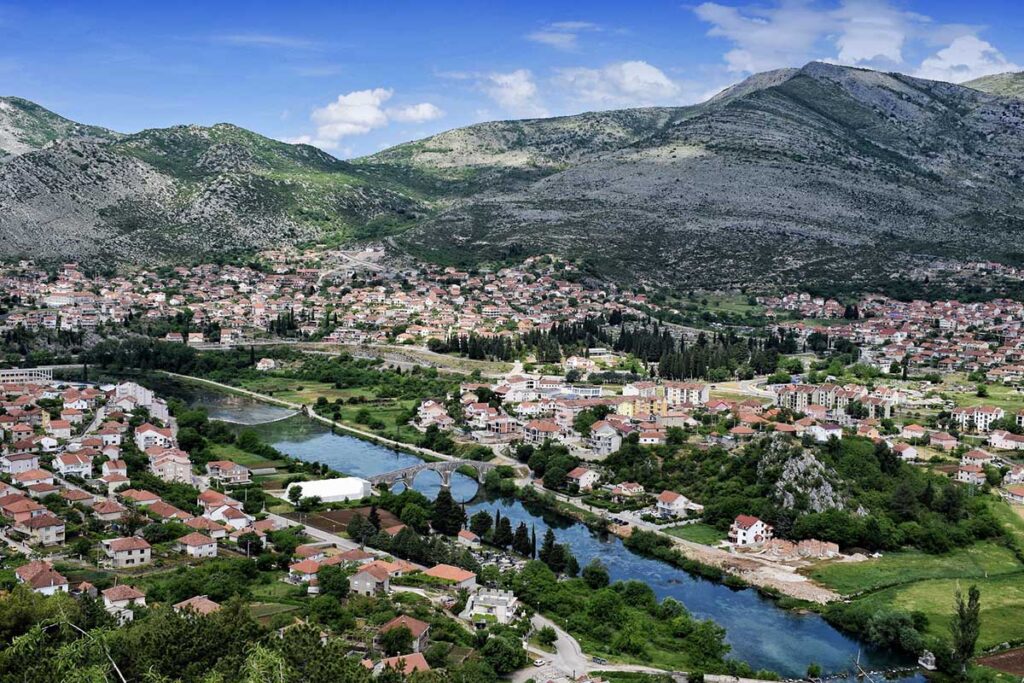
The history of Trebinje
Trebinje is first mentioned in Constantine VI Porphyrogennetos’ records in 10th century as Travunia. During that time, Trebinje was on the caravan road that lead from Kotor and Dubrovnik to Bosnia, Serbia and Montenegro. The oldest material evidence with ‘Trebinje’ inscription was carved on county ruler Grd’s tombstone from the second part of 12th century, which was found in the part of the city called Police.
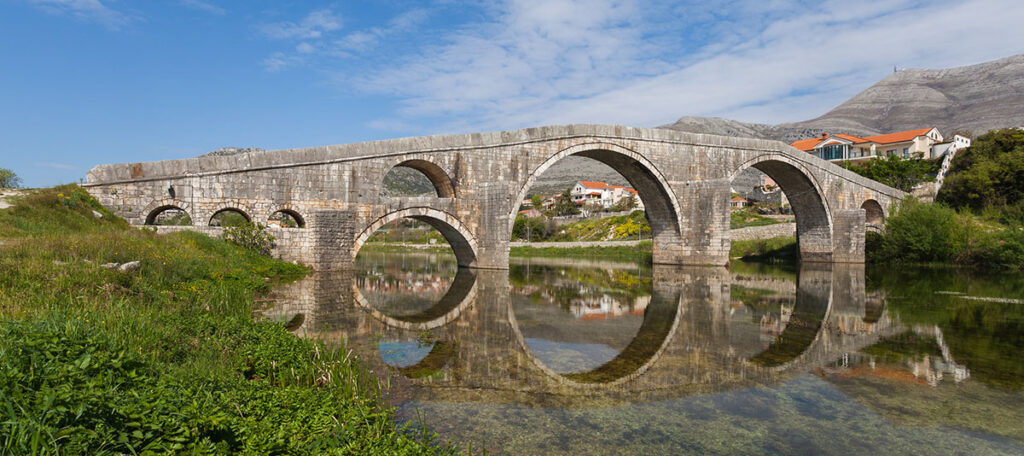
First urban outlines of Trebinje were formed in The Middle Ages. Originally, Trebinje was a part of the then Byzantine archontia (province) and after that all the way to 14thcentury it was the center of Travunia, a state that was a part of the kingdom of Nemanjići. Trebinje area was developing under a strong influence of Byzantine empire during the Middle Ages, and in 15th century, after the period of long independence, it fell under the Ottoman reign which lasted for many centuries. After that it was a part of Austro-Hungarian empire until 1918. For almost 200 years in The Middle Ages Trebinje was ruled by Nemanjić dynasty and after that by Tvrtko Kotromanić. From 1337 to 1466 (the fall under Turkish reign) Trebinje was a part of Bosnian banate (territory subdivision) ruled by the Kosača family. Turkish reign lasted from 1446 to 1878.
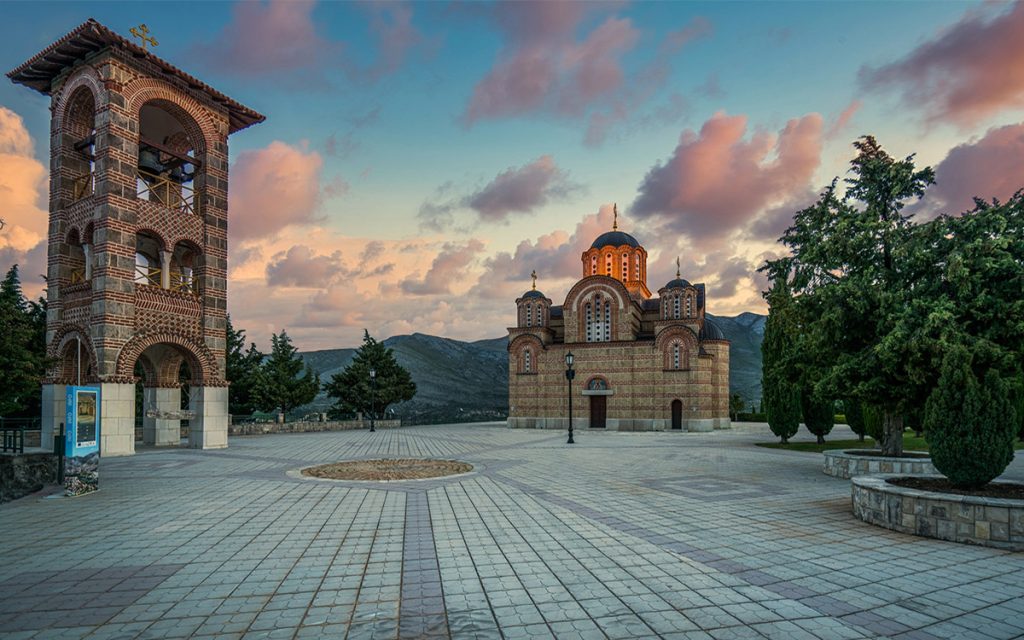
Each of these epochs and rules left its mark and branded local culture, both spiritually and materially.
Geographical position
Trebinje area is located in the southernmost part of Republic of Srpska and Bosnia and Herzegovina. It is also the hinterland of south Adriatic coast – the hinterland of Herceg Novi and Dubrovnik coastline.
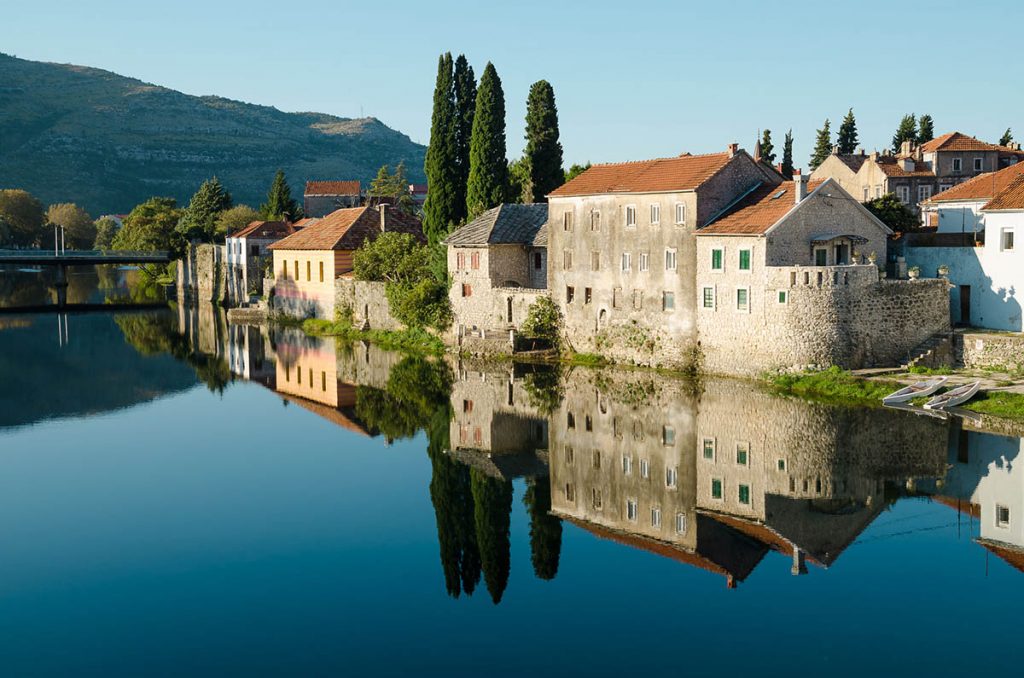
Trebinje has an area of 904 m2 and it is classified as average size municipality in Republic of Srpska.
To the north the municipality is bordered with Bileća, to the northwest with Ljubinje, to the south and southwest with the Municipality of Ravno (Federation of Bosnia and Herzegovina), to the south and southeast with the Municipality of Dubrovnik (Croatia) and to the east with the Municipality of Nikšić (Montenegro).
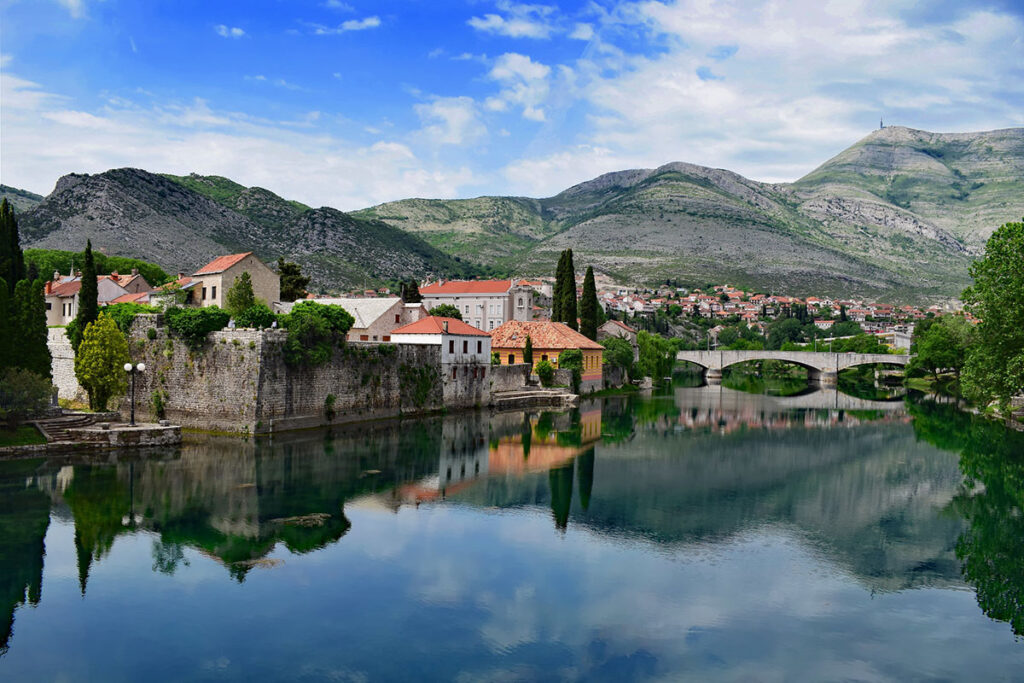
Climate
Mediterranean (semi-continental) climate with 260 sunny days is the reason for a warm and pleasant appearance of this area and people who live in it. Favorable climate enables good conditions for agriculture, especially for vine, early-season fruit and vegetables, which enrich Herzegovinian gastronomic offer for tourists.
Together with large number of sunny days, Trebinje’s climate has mild humidity and cloudiness, increased air currencies, rains during winter and warm summers. Interestingly, falls are warmer than springs. Average year temperature is around 15,5 °C.
Do you want to experience Trebinje firsthand, enjoy stunning nature, picturesque views of the Trebišnjica river, and learn all about its rich history? Contact us.
We will create a journey tailored to your preferences.

